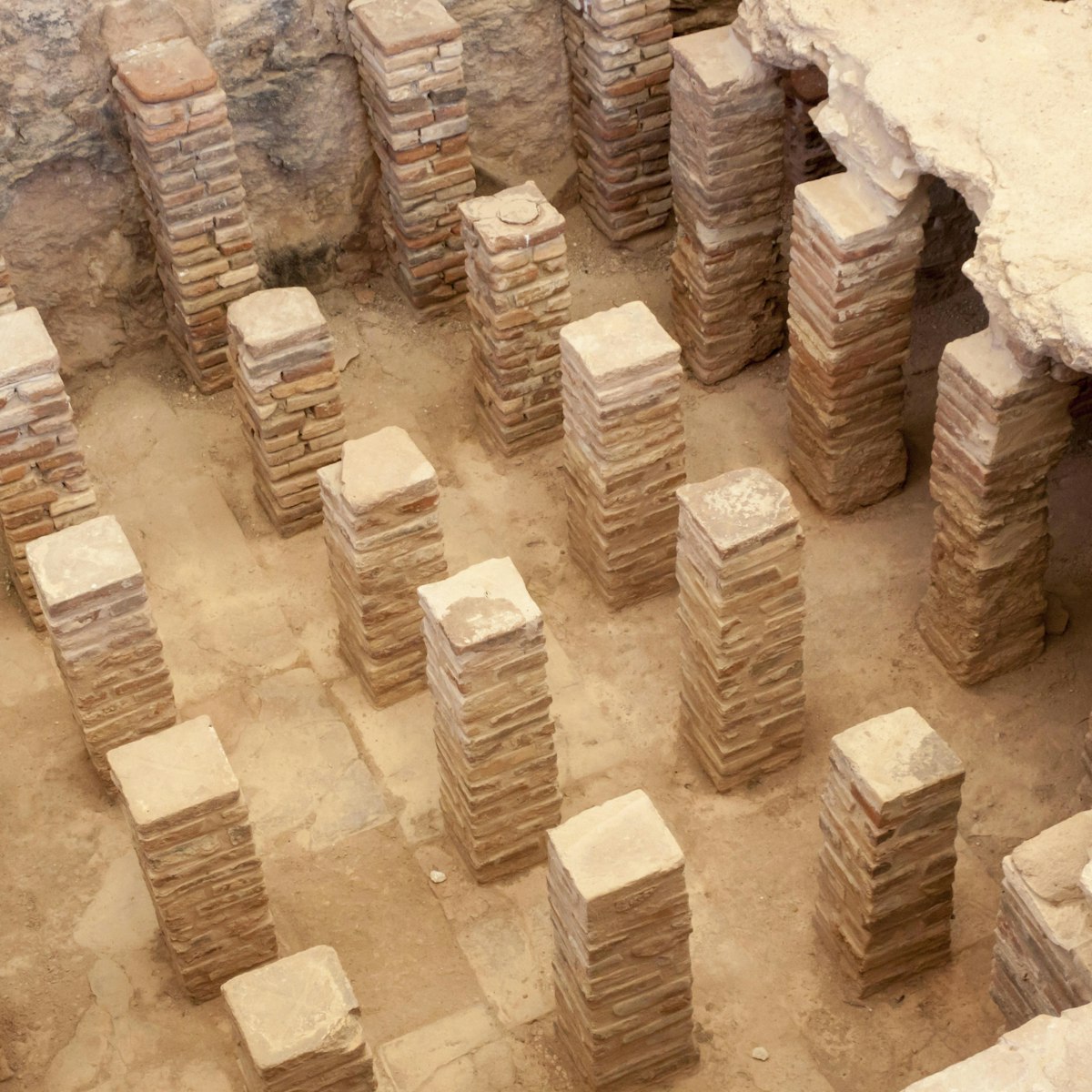The captivating original architecture has been retained here wherever possible. The inn is laden with antique furniture, rustic rooms, four-poster beds covered in woven white linen, and fireplaces. In the top-end suites and studios are plasma-screen TVs and Jacuzzis. There’s a separate sauna. Book in advance if you’re visiting on a weekend. The restaurant serves high-quality traditional food.
Linos Inn
Top choice in Troödos Mountains
Lonely Planet's must-see attractions

22.28 MILES
Defiantly perched on a hillside, with a sweeping view of the surrounding patchwork fields and the sea, Ancient Kourion is a spectacular site. Most likely…

9.14 MILES
The island’s most prosperous and opulent Orthodox monastery was founded in the 11th century by Byzantine emperor Alexios I Komninos after a bizarre series…

29.21 MILES
North Nicosia’s most prominent landmark (also clearly visible from the southern half of the city), the Selimiye Mosque is a beautiful mongrel of a…

23.58 MILES
The remains at this archaeological site, about 11km east of Lemesos, belie its original importance. Amathous was one of Cyprus’ original four kingdoms,…

29.48 MILES
The Venetian walls form a border around the Old City and are so unusual that, once seen on a map, you’ll never forget the odd snowflake-like shape.

27.25 MILES
Possibly the most famous beach in Cyprus, Aphrodite’s Beach is distinctive for its two upright rocks, which are easy to spot, particularly as you'll…

29.13 MILES
The Büyük Han is Cyprus' best-preserved example of Ottoman caravanserai architecture. Built in 1572 by the first Ottoman governor of Cyprus, Lala Mustafa…

26.76 MILES
A World Heritage Site, the sanctuary is recognised as being one of the most important ancient sites related to Aphrodite in Cyprus and yet it is arguably…
Nearby Troödos Mountains attractions
1. Panagia Theotokou (Arhangelou)
0.55 MILES
Dating from around 1514, this smaller chapel is just near Panagia tis Podythou. It’s quite dark inside, so you may want to bring a torch. It has vivid…
0.61 MILES
Part of the excellent Troödos Geopark, this is a small but well-laid-out botanical garden with a lily pond and other water features, including a tumbling…
0.67 MILES
Located in the village of Galata, on the Nicosia road, this 16th-century Unesco-listed church was established in 1502 by Dimitrios de Coron, a Greek…
1.03 MILES
This Unesco-listed church, known in English as St Nicholas of the Roof because of its large, heavy-pitched top, was founded in the 11th century and…
3.31 MILES
In operation until 1955, this well-preserved olive-stone mill and wooden press are now housed in a traditional building in Spilia’s village centre.
6. Agios Ioannis Lambadistis Monastery
4.12 MILES
This Unesco-listed site is a complex of three churches in one, dating from the 11th century and built over 400 years. Now under one huge pitched wooden…
4.26 MILES
Most people visit Pedoulas to see this extraordinary Unesco-listed church. Dating from 1474, the gable-roofed building sits in the lower part of the…
4.28 MILES
The museum’s rich collection of 12th- to 15th-century icons come from six ancient Byzantine churches in the village and include the late-13th-century icon…







